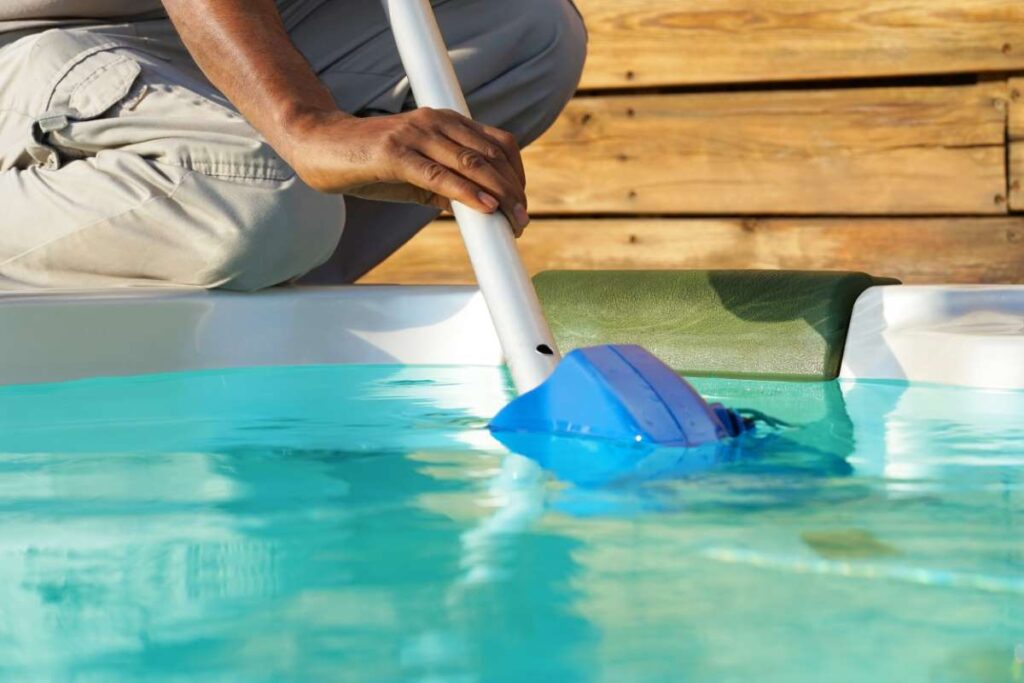How to Improve Efficiency With Maps in Parker County, Texas
Parker County, Texas, is a vibrant area rich in natural beauty and economic potential. In today’s fast-paced world, leveraging technology to enhance efficiency is more crucial than ever, especially for businesses operating in the pool maintenance industry. Maps can serve as a powerful tool for optimizing routes, maximizing service efficiency, and ultimately increasing profitability. This article will delve into various strategies and applications of maps in Parker County, focusing on how they can improve operational efficiency for service businesses, particularly those looking to expand their reach and customer base.
The Importance of Mapping in Service Industries
In any service-based industry, understanding geography and logistics can significantly impact performance. Efficient route planning can save time, reduce fuel costs, and enhance customer satisfaction. For pool service businesses operating in Parker County, utilizing mapping tools can streamline operations effectively. According to recent studies, companies that employ route optimization software can reduce driving times by up to 30%, translating into improved service delivery and customer retention.
In Parker County, the geographical layout includes urban areas such as Weatherford and rural surroundings that require careful planning. By leveraging maps, pool service operators can identify the best routes to reduce travel time between appointments. This is especially important in a region where traffic patterns can vary significantly, affecting service schedules. Mapping technology not only helps in route planning but also plays a crucial role in managing customer relationships effectively.
Using Advanced Mapping Tools
Today, numerous advanced mapping tools and applications are available that can revolutionize how pool service businesses operate. Tools like Google Maps, Waze, and dedicated route optimization software can provide real-time traffic updates, weather conditions, and even customer preferences. By integrating these resources, businesses can optimize their daily routes, ensuring timely service delivery while minimizing fuel costs.
Moreover, using geographic information systems (GIS) can help business owners visualize their service areas better. For instance, mapping customer locations across Parker County allows service providers to cluster appointments geographically, reducing unproductive travel time. This data-driven approach can lead to more efficient scheduling and increased customer satisfaction as clients benefit from timely service. Companies interested in expanding their operations can utilize these mapping tools to identify underserved areas and strategize their market entry effectively.
Mapping for Customer Relationship Management
In the competitive pool maintenance industry, maintaining strong customer relationships is vital for long-term success. Maps can aid in managing customer relationships by offering insights into customer locations, service histories, and preferences. By analyzing this data, businesses can tailor their services to meet client needs better and foster loyalty.
Additionally, businesses can utilize mapping tools to send targeted marketing campaigns to customers based on their geographic location. For instance, if a new pool cleaning product is available, companies can identify customers within a specific radius and send them promotional materials or offers tailored to their needs. This localized approach not only enhances customer engagement but also creates opportunities for upselling services, further driving revenue.
Best Practices for Implementing Mapping Solutions
To fully leverage mapping solutions for business efficiency, pool service operators should follow best practices. Firstly, investing in the right software that suits specific business needs is essential. Depending on the scale of operations, businesses may require advanced features such as automated scheduling, customer management integration, and real-time tracking.
Secondly, training staff on how to use these tools effectively can maximize their benefits. Providing employees with training on route optimization technology can minimize errors and enhance productivity. Lastly, regularly reviewing mapping strategies and outcomes is crucial. Businesses should assess the efficiency of their routing and adjust based on performance data to ensure continuous improvement.
Integrating Technology with Traditional Mapping Techniques
While digital mapping solutions are invaluable, traditional mapping techniques still hold merit, especially in areas with inconsistent internet coverage. Having physical maps on hand can offer backup solutions for service routes. Furthermore, mixing traditional and digital methods can provide a comprehensive view of service areas, allowing businesses to devise the best possible strategies for growth and efficiency.
For example, during peak seasons, when demand increases, having a visual representation of all service routes can help identify which areas require more attention. Businesses can quickly adapt by assigning more staff or resources to those high-demand zones, ensuring no client is left unattended. By integrating technology with traditional mapping techniques, pool service businesses can achieve a strategic advantage over their competitors.
Case Study: Successful Mapping Implementation in Parker County
Consider a hypothetical scenario of a pool service company, “Clear Blue Pools,” operating in Parker County. Initially, they faced challenges in scheduling and efficient route management, leading to dissatisfied clients and increased operational costs. By implementing advanced mapping software, they were able to visualize customer locations, optimize routes, and enhance their service delivery significantly.
Clear Blue Pools utilized real-time traffic updates to avoid congested areas, effectively reducing service times. After three months, they reported a 20% increase in customer satisfaction, as clients received services more promptly. Moreover, the company saw a 25% reduction in fuel costs, allowing them to invest that savings back into the business.
This case exemplifies how mapping tools can transform a service business’s operational efficiency. For pool service owners in Parker County, this demonstrates the potential benefits of adopting similar strategies to enhance their own business models.
Engaging with the Community through Mapping
Beyond operational efficiency, mapping can also enhance community engagement for pool service businesses. By showcasing service areas on their websites or through community outreach programs, businesses can highlight their commitment to local neighborhoods. This transparency can foster trust and encourage potential customers to choose their services over competitors.
Additionally, hosting community events or sponsoring local initiatives can be promoted effectively using maps to indicate service areas. A pool service company could organize a community pool day, using maps to show families where they provide services or offer free consultations. Such initiatives not only increase brand visibility but also establish the business as an integral part of the local community.
Future Trends in Mapping Technology
The future of mapping technology is promising, particularly for service industries like pool maintenance. As artificial intelligence and machine learning technology evolve, mapping tools will likely become even more sophisticated, providing predictive analytics for service demands. This capability would enable businesses to foresee customer needs and allocate resources proactively.
Moreover, the continued integration of mapping applications with customer relationship management (CRM) systems will allow businesses to create comprehensive profiles of their clients. This information can be invaluable for personalizing services and enhancing customer experiences. As mapping technology continues to advance, pool service businesses in Parker County can position themselves ahead of the curve by staying informed about trends and adapting accordingly.
Conclusion
In summary, leveraging maps is an essential strategy for improving efficiency in Parker County’s pool maintenance industry. From optimizing routes to enhancing customer relationships, mapping technology offers various benefits that can significantly enhance operational performance. As businesses embrace these tools, they not only improve their bottom line but also elevate the customer experience.
As the industry evolves, staying updated on mapping innovations will be vital for continued success. For those looking to explore opportunities in the pool maintenance sector, consider the value of established routes. Explore [Pool Routes for Sale](https://pool-routes-for-sale.com/) to find the perfect fit for your business needs and ensure you thrive in this growing market.



